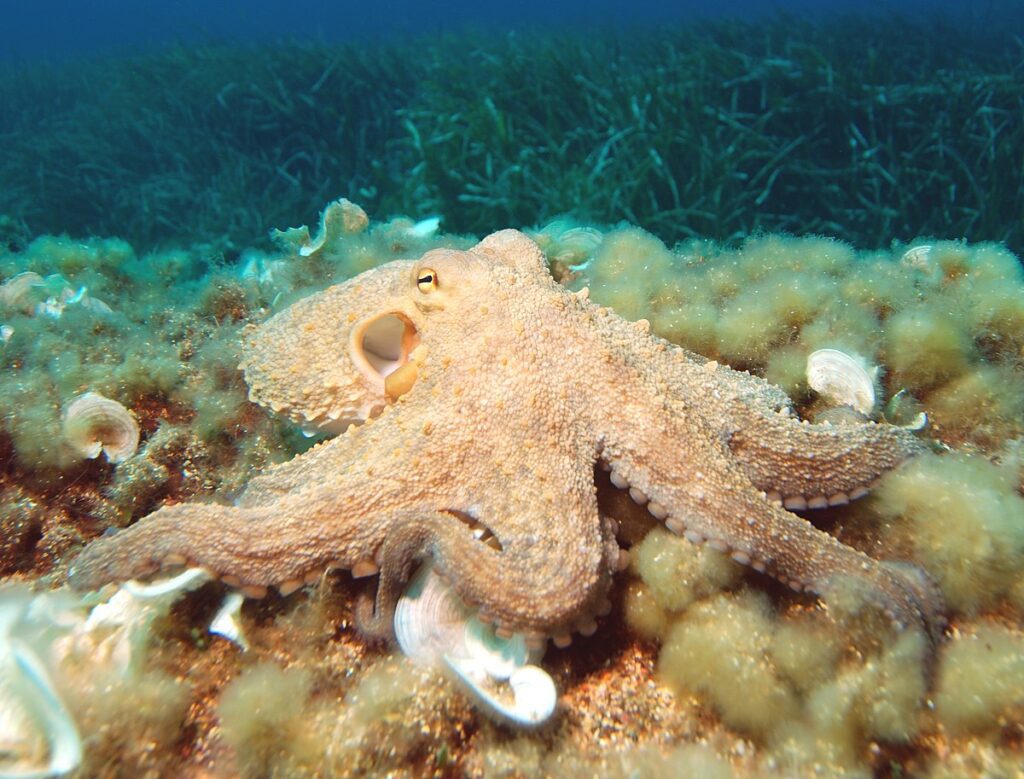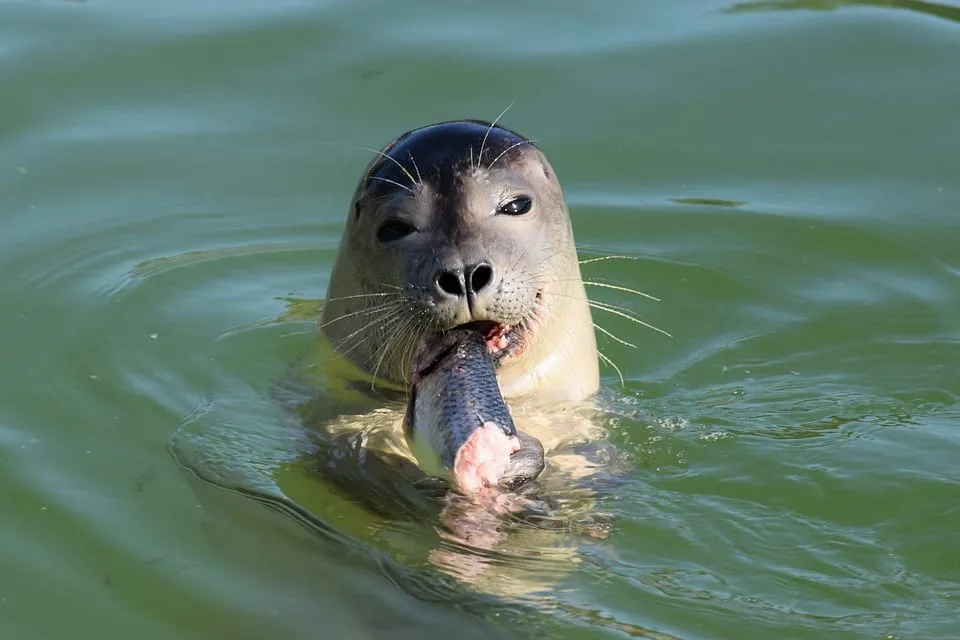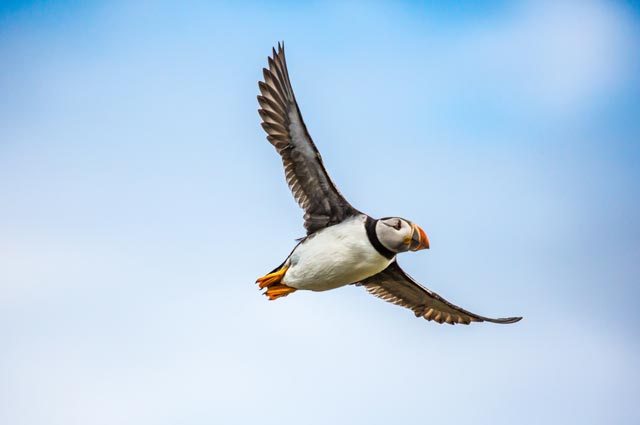Monkfish
These weird looking marine creatures are actually a cousin of the angler fish – a deep sea species with a lantern hanging from the top of its head to lure prey into its large teeth, which you may recognise from the film ‘Finding Nemo’! Monkfish have small eyes, rows of fang-like teeth and large mouths. They are bottom dwellers and can be seen across the North Atlantic and over towards Norway.
The monkfish hunts its prey by waiting on the sea bed, using its antennae lures to attract passing fish and crustaceans and ambushing their prey, engulfing them in their large jaws.
Weird Fact
The Monkfish is rather than swimming they use their fins to ‘walk’ along the ocean floor, searching for prey and will near enough eat anything that gets close enough to their mouths.
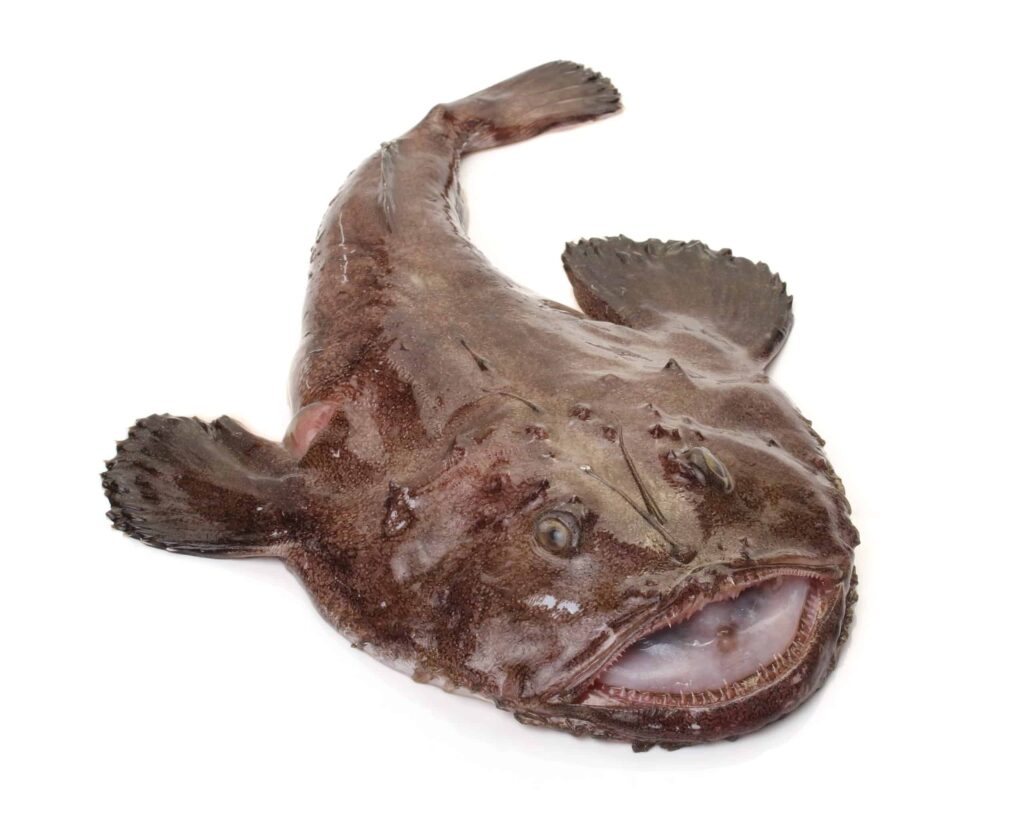
Conger Eel
One of the most curious but timid creatures at the same time is the Conger Eel. These special creatures are commonly found in crevasses and cracks, making their home in between rocks or are often seen around shipwrecks. Found in the tropical, subtropical and temperate waters of the Atlantic, Indian and West Pacific Ocean, we’re lucky to also have them on our Cornish shores.
When hunting, Conger Eels wait in the darkness and ambush their prey whilst swimming past, but are also seen scavenging the sea bed for dead or rotting fish.
Weird Fact
Conger Eels are actually 90% blind and primarily hunt by scent, but you should always be aware when near a Conger Eel not to get too close as they can be aggressive when provoked.
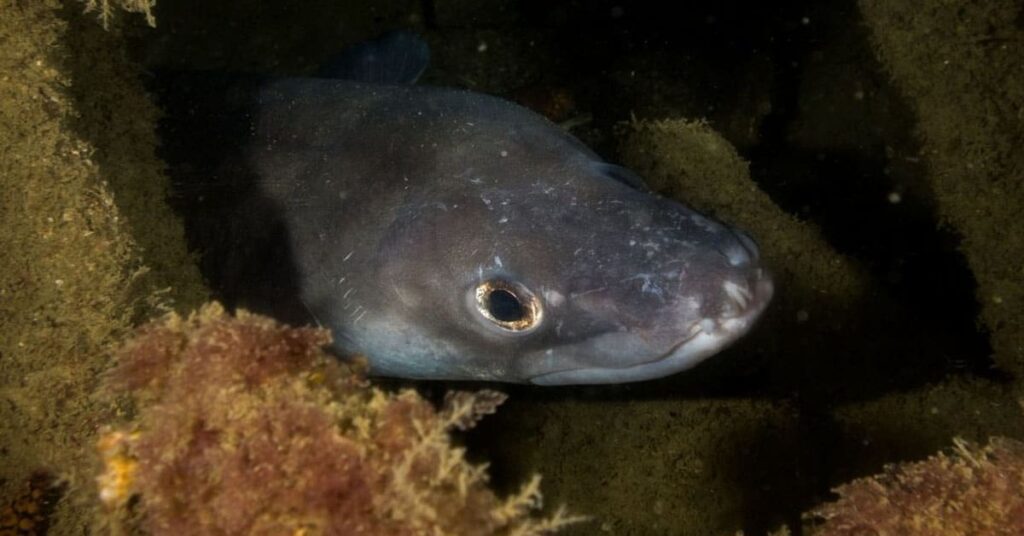
Ling
The Ling is a member of the ‘Lotidae’ family, closely related to the Cod; but Ling look like a bit of a mix between a Cod and a Conger Eel, with their long, slim bodies. Usually found in the North Atlantic or on European shores, they make their home around deep rocky sea beds or shipwrecks, just like the Conger Eel.
Ling are quite generalist feeders and will hunt any fish they can find including herring, mackerel and cod as well as flatfish near the seabed. They will also occasionally eat crustaceans such as crab and have even been known to feed on starfish. The ling is reminiscent of a mythical water dragon, with its whiskers and long slender body!
Weird Fact
Female ling both grow faster and live longer than the males, with an expected lifespan of up to 14 years for females, but only 10 years for males!
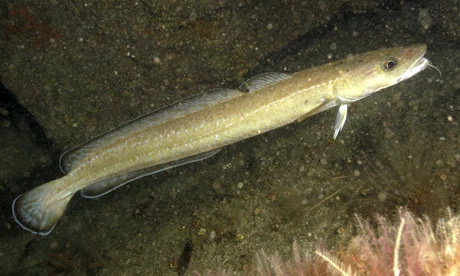
Velvet Swimming Crab
Velvet swimming crabs you may have seen before in rock pools. These red, beady-eyed crabs can be aggressive little creatures and will protect their space at all costs, so beware of your fingers! The velvet swimming crab gets its name from those little swimming legs located at the back of their body. They love to hang around rock pools or rocky outcrops which protects them from bigger predators.
Weird Fact
The velvet swimming crab has the ability to change the colour of its carapace (the hard outer shell) to blend in with its surroundings. This helps them avoid predators and stay camouflaged.

Common Octopus
The Common Octopus is a rather interesting marine creature. These cephalopods posses a captivating charm, and are highly intelligent, possessing unique characteristics which are seen in no other creature in any terrain. Octopus are masters of disguise, changing their skin pigment and texture to camouflage themselves – you may have been swimming with one but you’d never know! They can also release ink to confuse predators, allowing them to escape, which even dulls their attacker’s sense of smell, making them harder to follow. They love rock pools, rocky outcrops or coral reefs where they can shelter from larger predators.
Weird Fact
The Common Octopus have 3 hearts and a decentralised nervous system, with every tentacle working independently. These characteristics make the Octopus a unique and fascinating creature.
